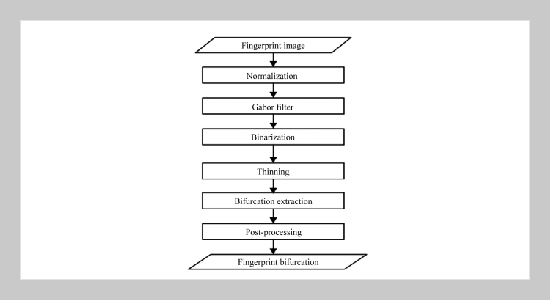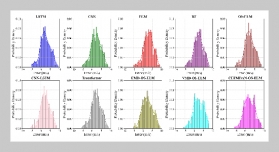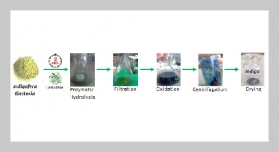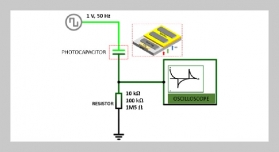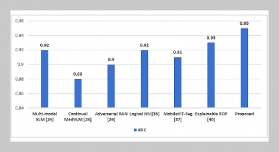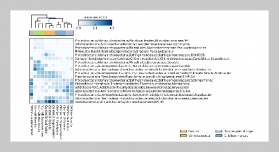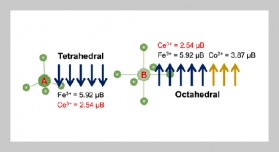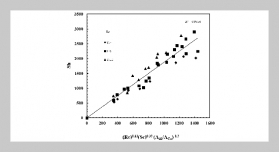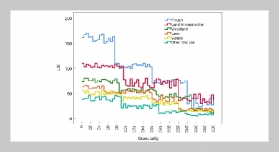REFERENCES
- [1] Parthasaradhi, S. T. V., Derakhshani, R., Hornak, L. A. and Schuckers, S. A. C., “Time-Series Detection of Perspiration as a Liveness Test in Fingerprint Devices”, Systems, Man and Cybernetics, Part C: Applications and Reviews, IEEE Transactions on, Vol. 35, pp. 335�343 (2005).
- [2] Ballan, M., “Directional Fingerprint Processing,” Signal Processing Proceedings, 1998. ICSP’98. Fourth International Conference on, Vol. 2, 12-16, pp. 1064� 1067 (1998).
- [3] Mohamed, Suliman, M. and Nyongesa, Henry, O., “Automatic Fingerprint Classification System Using Fuzzy Neural Techniques,” IEEE International Conference on, Vol. 1, pp. 12�17 (2002).
- [4] Kulkarni, Jayant, V., Patil, Bhushan, D. and Holambe, Raghunath, S., “Orientation Feature for Fingerprint Matching” Pattern Recognition, Vol. 39, pp. 1551� 1554 (2006).
- [5] Prabhakar, S., Jain, A. K., Wang Jianguo, Pankanti, S. and Bolle, R., “Minutiae Verification and Classification for Fingerprint Matching,” 15th International Conference on, Vol. 1, 2�7 (2000).
- [6] Lu H., Jiang X. and Yan W.-Y., “Effective and Efficient Fingerprint Image Postprocessing,” 7th International Conference on, Vol. 2, 2�5 (2002).
- [7] Wang S. and Wang Y., “Fingerprint Enhancement in the Singular Point Area,” Signal Prcessing Letters IEEE, Vol. 11, pp. 16�19 (2004).
- [8] Hong L., Wan Y. and Jain, A., “Fingerprint Image Enhancement: Algorithm and Performance Evaluation,” Pattern Analysis and Machine Intelligence, IEEE Transaction on, Vol. 20 (1998).
- [9] Qun Gao, Forster, P., Mobus, K. R., Moschytz, G. S., “Fingerprint Recognition Using CNNS: Fingerprint Preprocessing,” The 2001 IEEE International Symposium on, Vol. 3, 6�9 (2001).
- [10] Simon-Zorita, D., Ortega-Garcia, J., Cruz-Llanas, S. and Gonzalez-Rodriguez, J., “Minutiae Extraction Scheme for Fingerprint Recognition Systems,” 2001 International Conference on, Vol. 3, 7�10 (2001).
- [11] Kasaei, S., Deriche, M. and Boashash, B., “Fingerprint Feature Extraction Using Block-Direction On Reconstructed Images,” Speech and Technologies for Computing and Telecommunications., Proceeding of IEEE, Vol. 1, 2�4 (1997).
- [12] Yang Gao, Meng Joo, Er., “Online Adaptive Fuzzy Neural Identification and Control of a Class of MIMO Nonlinear Systems,” IEEE Transaction on, Vol. 11, (2003).
- [13] Sagar, V. K., Ngo, D. B. L. and Foo, K. C. K., “Fuzzy Feature Selection for Fingerprint Identification,” 29th Annual 1995 International Carnahan Confrence on, 18-20, pp. 85�90 (1995).
- [14] Ghassemian, M. H., “A Robust On Line Restoration Algorithm For Fingerprint Segmentation,” International Conference on, Vol. 1, 16-19, pp. 181�184 (1996).
- [15] Belfore, L. A., II, Johnson, B. W. and Aylor, J. H., “Modeling of Fault Tolerance in Neural Networksv,” 15th Annual Conference of IEEE, Vol. 4, 6-10, pp. 753�758 (1989).
- [16] Amin, M. B. and Shekhar, S., “Customizing Parallel Formulations of Back-Propagation Learning Algorithm to Neural Network Architectures: A Summary of Results,” 6th International Conference on, pp. 181� 189 (1994).
- [17] Fernandez de Canete, J., Garcia-cerezo, A., GarciaMoral, I., Garcla-Gonzales, A. and Macias, C., “Control Architecture Based on a Radial Basis Function Network,” International Workshop on, 21�23, pp. 254�262 (1996).
- [18] Chen, B. and Hoberock, L. L., “Machine Vision Fuzzy Object Recognition and Inspection Using a New Fuzzy Neural Network,” Proceedings of the 1996 IEEE International Symposium on, pp. 206�211 (1996).
- [19] Lu Ming, “Improved Neural Network Modeling Approach for Engineering Applications,” Proceedings of the 9th International Conference on, Vol. 4, pp. 1810� 1814 (2002).
- [20] Dung Chung Che, Wang Kok Wai and Eren, H., “Modular Artificial Neural Network for Prediction of Petrophysical Properties From Well Log Data,” IEEE Transactions on, Vol. 46, pp. 1295�1299 (1997).
- [21] Del Carmen Valdes, M. and Inamura, M., “Spatial Resolution Improvement of Remotely Sensed Images by a Fully Interconnected Neural Network Approach,” IEEE Transactions on, Vol. 38, pp. 2426�2430 (2000).


